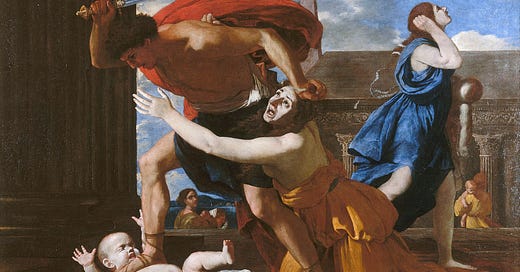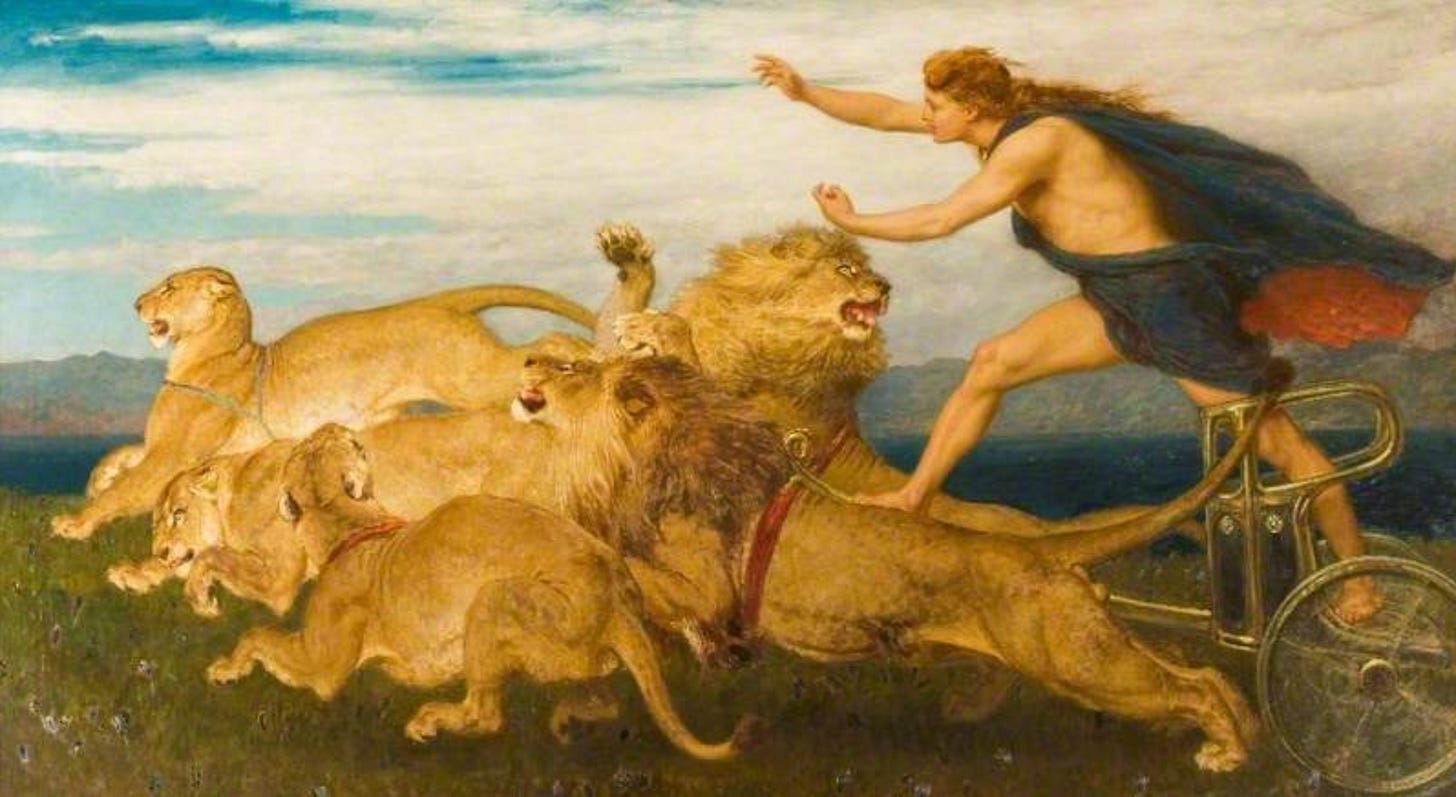Fresh Batch #32: The Plunderer of the Elements and the Bullies of the Skies
By Dylan Saccoccio
When the Sun is in a sign, the constellation rises and sets with the Lord for approximately thirty days, a twelfth part of the year. This is why the Sun is allegorized as “slaying” or “putting away” characters that are symbolic of the constellations, luminaries, or asterisms. Whether it’s Herod killing Rachel’s sons or Herod beheading John the Baptist, much of what the masses believe is history is merely astrotheological allegories.
While I don’t particularly enjoy astrotheology, it is critical to be able to recognize when history is encoded with it so you know that you’re not looking at authentic history. From the Deaf Phoenicians, “John is beheaded by a younger Herod. When is the festival of the beheading of John the Baptist? August 29th. As John decreases, the Sun in Leo is still the hottest time of year, and on August 29th (once its moved into Virgo), at 4:30 pm in the blazing hot afternoon, Sadalsuud, the brightest star in Aquarius and the left shoulder of John, rises above the horizon while the rest of his body remains below it.
“Which constellation rises and opposes Aquarius at 2:30am on August 30th each year? (It will be slightly off, due to precession, compared to when the symbolism was created). Look at the Zodiac. Which sign is opposite of Aquarius? It is none other than the constellation of Leo: King Herod. Many of these sun gods will be depicted with lions or wearing the skin of a lion.”
If this interests you and you haven’t already read Book I, dive in and it’ll give you keys to astrotheology (click the image).
Below is Phoebus Apollo, who is the same archetype.
Keep reading if you’re interested in the most beautiful command of language and allegory regarding Iris and Phoebus.
Become a member to access the rest of this article.
Keep reading with a 7-day free trial
Subscribe to Ancient History, Mythology, & Epic Fantasy to keep reading this post and get 7 days of free access to the full post archives.








